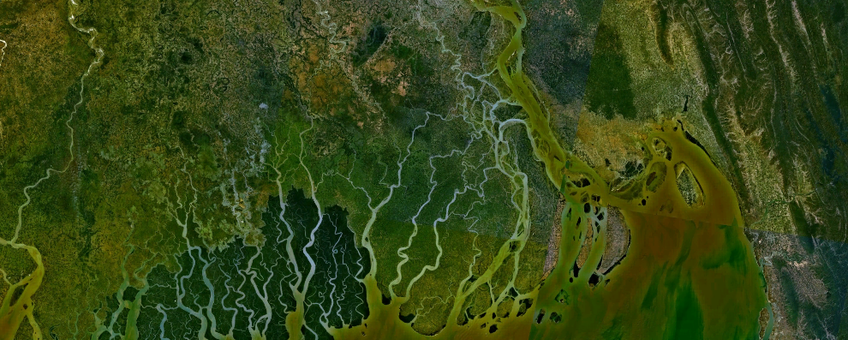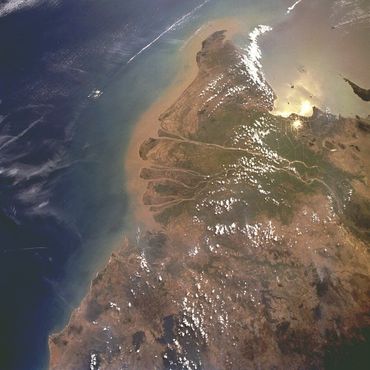
Tides stabilize deltas until humans interfere
Wageningen UniversityA review of recent literature by a team of researchers from Wageningen University & Research, Deltares, Twente University and Delft University of Technology reveals the contrasting roles of tides in natural and human-controlled deltas.
Under natural circumstances, tides act to stabilize river deltas. The oscillatory tidal flow counteracts the processes responsible for bank erosion, which explains why unprotected tidal channels migrate only slowly. Peak river discharges attenuate the tides, which creates storage space to accommodate the extra river discharge during extreme river flood events and as a consequence, reduces flood risk. With stronger tides, the river discharge is being distributed more evenly over the various branches in a delta, preventing silting up of smaller channels. “But human activity in deltas intensifies,” says Ton Hoitink, professor of Environmental Fluid Mechanics at Wageningen University & Research. “We have a great impact on deltas. Storm surge barriers are constructed, new land is being reclaimed and large-scale sand excavation – for building material - takes place. Reviewing delta studies from around the globe shows that in human-controlled deltas the tidal motion can play a destabilizing role.”
 Sand mining in the tidally influenced Mekong Delta has led to widespread river bank failures. In the Rhine-Meuse Delta, part of the embanked channels is incising and scour holes have developed. These developments relate to the changes in tidal motion following the closure of the Haringvliet Estuary with a storm surge defense work. The catastrophic flood event in the Ganges-Brahmaputra Delta by Cyclone Aila, which caused the inundation of an embanked polder area for over two years, was preceded by river bank erosion at the mouths of former tidal channels that were blocked by the embankment.
Sand mining in the tidally influenced Mekong Delta has led to widespread river bank failures. In the Rhine-Meuse Delta, part of the embanked channels is incising and scour holes have developed. These developments relate to the changes in tidal motion following the closure of the Haringvliet Estuary with a storm surge defense work. The catastrophic flood event in the Ganges-Brahmaputra Delta by Cyclone Aila, which caused the inundation of an embanked polder area for over two years, was preceded by river bank erosion at the mouths of former tidal channels that were blocked by the embankment.
At present, there are few efforts to predict the developments of degrading deltas. Existing delta models are capable of reproducing expanding deltas, which is essentially a matter of simulating the transport of sediment from source in a catchment to the sink in a delta. Processes of soil compaction, mixing of sands and clay, and the influence of poorly erodible layers, like peat and clay, complicate the prediction of delta erosion. Hoitink: “Considering sea-level rise, sediment depletion and all the direct human modifications in deltas, there is a need for a new generation delta models using quantified erosion resistance from geological records.”
Text: Wageningen University
Photos: NASA (lead photo: Ganges Delta)
